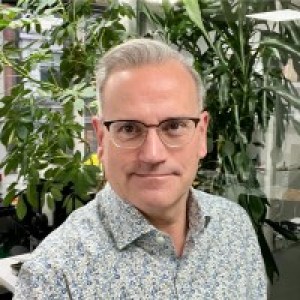- Video Library
- Antony Odell Presents Echopoint Medical at LSI Europe '23
Antony Odell Presents Echopoint Medical at LSI Europe '23

Antony Odell
Antony is a professional with an extensive career spanning three decades in the field of medical technology. His journey began with multinational powerhouses like Johnson & Johnson (J&J), where he held senior business roles.
As his career evolved, Antony's focus shifted towards nurturing innovation and pioneering advancements in the medical technology landscape through early-stage start-ups. With a diverse background and expertise in various fields, including vascular medicine, orthopaedics, and regenerative medicine, he showcased his adaptability and forward-thinking approach.
One of Antony's key achievements came with his tenure as CEO of Tissue Regenix, a remarkable AIM-listed company. Under his leadership, the organization expanded its operations beyond borders, establishing a strong presence in the UK, Germany, and the US. The company's growth trajectory was further solidified through strategic acquisitions, such as CellRight Technologies Inc in 2017, positioning Tissue Regenix as a global player in regenerative medicine.
Currently, Antony is at the helm of two promising spin-out companies, Echopoint Medical Ltd and Tandem Nano Ltd, where he serves as CEO. Leveraging his commercial experience, he has devised focused and strategic business plans that meticulously consider the clinical, regulatory, and reimbursement landscapes. Furthermore, Antony prioritizes crafting sustainable exit strategies that ensure optimal returns for investors.
Throughout his career, Antony's understanding of the medtech landscape and his ability to navigate complex challenges have earned him a reputation as a thought leader and industry expert. His contributions have not only pushed the boundaries of medical technology but also positively impacted patient care and outcomes worldwide.
Antony Odell
Antony is a professional with an extensive career spanning three decades in the field of medical technology. His journey began with multinational powerhouses like Johnson & Johnson (J&J), where he held senior business roles.
As his career evolved, Antony's focus shifted towards nurturing innovation and pioneering advancements in the medical technology landscape through early-stage start-ups. With a diverse background and expertise in various fields, including vascular medicine, orthopaedics, and regenerative medicine, he showcased his adaptability and forward-thinking approach.
One of Antony's key achievements came with his tenure as CEO of Tissue Regenix, a remarkable AIM-listed company. Under his leadership, the organization expanded its operations beyond borders, establishing a strong presence in the UK, Germany, and the US. The company's growth trajectory was further solidified through strategic acquisitions, such as CellRight Technologies Inc in 2017, positioning Tissue Regenix as a global player in regenerative medicine.
Currently, Antony is at the helm of two promising spin-out companies, Echopoint Medical Ltd and Tandem Nano Ltd, where he serves as CEO. Leveraging his commercial experience, he has devised focused and strategic business plans that meticulously consider the clinical, regulatory, and reimbursement landscapes. Furthermore, Antony prioritizes crafting sustainable exit strategies that ensure optimal returns for investors.
Throughout his career, Antony's understanding of the medtech landscape and his ability to navigate complex challenges have earned him a reputation as a thought leader and industry expert. His contributions have not only pushed the boundaries of medical technology but also positively impacted patient care and outcomes worldwide.

17011 Beach Blvd, Suite 500 Huntington Beach, CA 92647
714-847-3540© 2025 Life Science Intelligence, Inc., All Rights Reserved. | Privacy Policy







